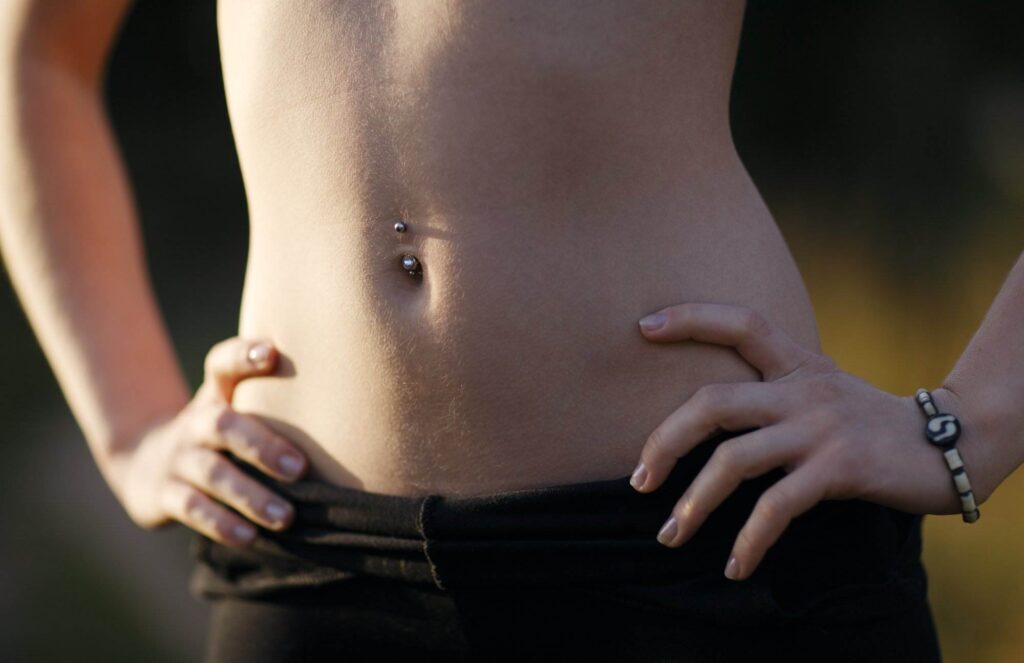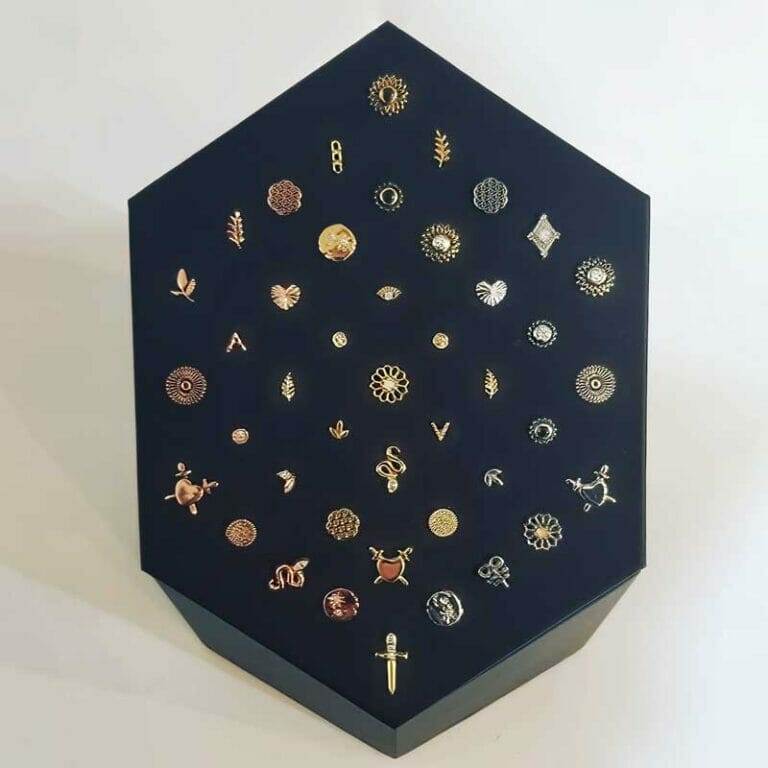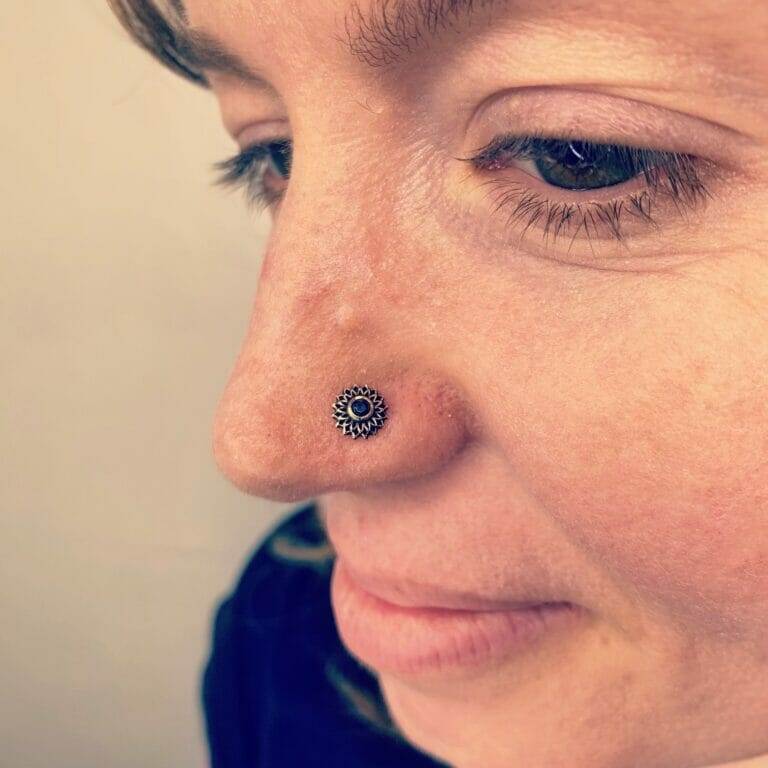Rise of Daith Piercings
History and Origin
The rise of daith piercings can be traced back several centuries, as this unique body modification has origins deeply rooted in both fashion and cultural practices. The term “daith” originates from the Hebrew word for “knowledge,” reflecting its association with the inner ear and the brain. Traditionally, some cultures believed that these piercings offered not just aesthetic appeal, but also health benefits, particularly in reducing migraines. Many early adopters of daith piercings were part of subcultures that embraced body art as a form of self-expression. Over time, this piercing gained popularity in the mainstream, especially among those looking for alternatives to traditional earlobe piercings.
Popular Daith Piercing Styles
As the popularity of daith piercings has surged, so too have the styles in which they are showcased. Here are some beloved daith piercing styles:
- Hoops: These circular pieces add a minimalistic yet eye-catching flair.
- Barbell Designs: Perfect for those who prefer a sleek and modern approach to piercings.
- Studs: Simple and subtle, studs can complement any look while still standing out.
- Stacked Look: Multiple daith piercings create a unique stacked effect that speaks volumes about personal style.
With such a variety of options available, exploring different daith piercing styles allows individuals to express their personality and enhance their overall aesthetic in an individualized manner.
Navel Piercing Renaissance
Evolution of Navel Piercings
Following the intriguing rise of daith piercings, navel piercings have entered a renaissance of their own. Once regarded as a bold statement primarily seen in the late 1990s, they have transitioned from a fleeting trend to a captivating fashion staple. Initially popularized by celebrities and pop culture icons, navel piercings have evolved through various styles and techniques, making them more accessible and customizable for everyone. Today, people of all ages embrace navel piercings not only as a form of self-expression but also as an art form in body modification. It’s fascinating how navel piercings have been reimagined, with many opting for creative designs that reflect their personal tastes.
Unique Jewelry Options for Navel Piercings
When it comes to navel piercings, the variety of jewelry options is practically endless. Here are some unique styles that can redefine this classic piercing:
- Belly Button Rings: The traditional choice that remains timeless, often embellished with charms or gemstones.
- Barbell Variants: Flexible segments allow for diverse customization while being comfortable for daily wear.
- Dangle Designs: Incorporating charms or pendants for a playful touch that draws the eye.
- Threaded Ends: For a more sophisticated look, these can feature intricate designs and materials.
Ultimately, the choices available for navel piercing jewelry are not just about aesthetics; they also provide an opportunity for individuals to showcase their personality and style.
Industrial Piercings on the Rise
Industrial Piercing Variations
As the trend of body modifications continues to expand, industrial piercings are experiencing a remarkable surge in popularity. This striking style, which involves two or more holes connected by a long barbell, provides a bold statement that is both edgy and sophisticated. There are several variations of industrial piercings that individuals can explore to truly customize their look:
- Standard Industrial: This classic style features two piercings along the upper ear, usually in the cartilage, connected by a single straight bar.
- Triple Industrial: A daring option that links three ear piercings with a longer barbell, perfect for those looking to make a statement.
- Curved Industrial: A variation that uses a curved barbell, allowing for more unique angles and contours in the ear.
- Multi-Bar Industrial: Incorporating multiple bars that connect various piercings, this option provides additional flair and dimension.
Healing and Aftercare Tips
With great style comes great responsibility! Proper care for industrial piercings is essential for ensuring a smooth healing process. Here are some key aftercare tips to keep the piercing healthy:
- Clean Regularly: Use saline solution or a mild saline spray to gently clean the area twice a day.
- Avoid Touching: Refrain from touching or playing with the piercing, as this can introduce bacteria.
- Keep Hair Away: Be cautious of long hair getting caught in the piercing during the initial healing phase.
- Watch for Infection: Keep an eye out for any signs of infection, such as redness, swelling, or pus.
By following these steps, individuals can enjoy their industrial piercings while ensuring a swift and healthy recovery. Embracing this trend allows for a unique expression of self, all while prioritizing piercing care.
Trending Dermal Piercings
Dermal Piercing Placements
Continuing the exploration of unique body modifications, dermal piercings have gained significant traction in the world of body art. Unlike traditional piercings that pass through both sides of the skin, dermal piercings consist of a single anchor placed beneath the surface, allowing for a striking and versatile look. Individuals are opting for various placements to showcase their personality:
- Collarbone: A popular choice that can be easily concealed or highlighted, depending on the outfit.
- Cheekbones: This placement enhances facial features and adds a unique touch to one’s appearance.
- Nape of the Neck: Ideal for a more hidden aesthetic, making it a perfect choice for those who prefer subtlety.
- Hands and Fingers: For those looking to stand out further, dermal piercings on the hands can be eye-catching and edgy.
Maintenance of Dermal Piercings
However, with great style comes the responsibility of proper maintenance. Keeping dermal piercings healthy is crucial to prevent complications. Here are some essential tips for maintaining dermal piercings:
- Clean Thoroughly: Use saline solution to clean the area gently, ideally once or twice a day.
- Avoid Tight Clothing: Prevent irritation by steering clear of tight collars or accessories that might rub against the piercing.
- Stay Hydrated: Hydration supports skin elasticity and healing, so drink plenty of water.
- Be Gentle: Avoid knocking or pulling on the jewelry, as it can lead to discomfort or displacement.
By committing to these maintenance practices, individuals can enjoy the beauty of dermal piercings while ensuring they remain in great condition for years to come. Embracing this trending style not only enhances aesthetic appeal but also provides a new canvas for self-expression.
Cartilage Piercing Comeback
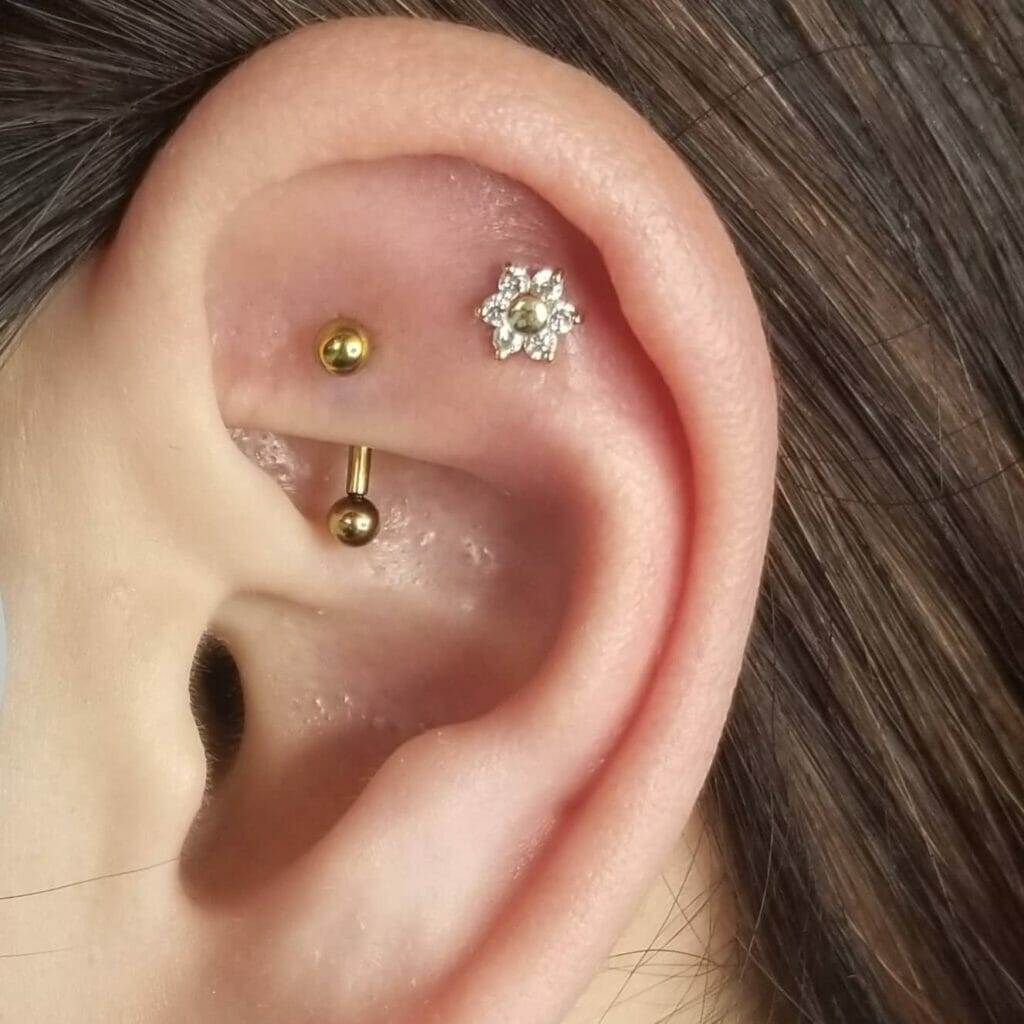
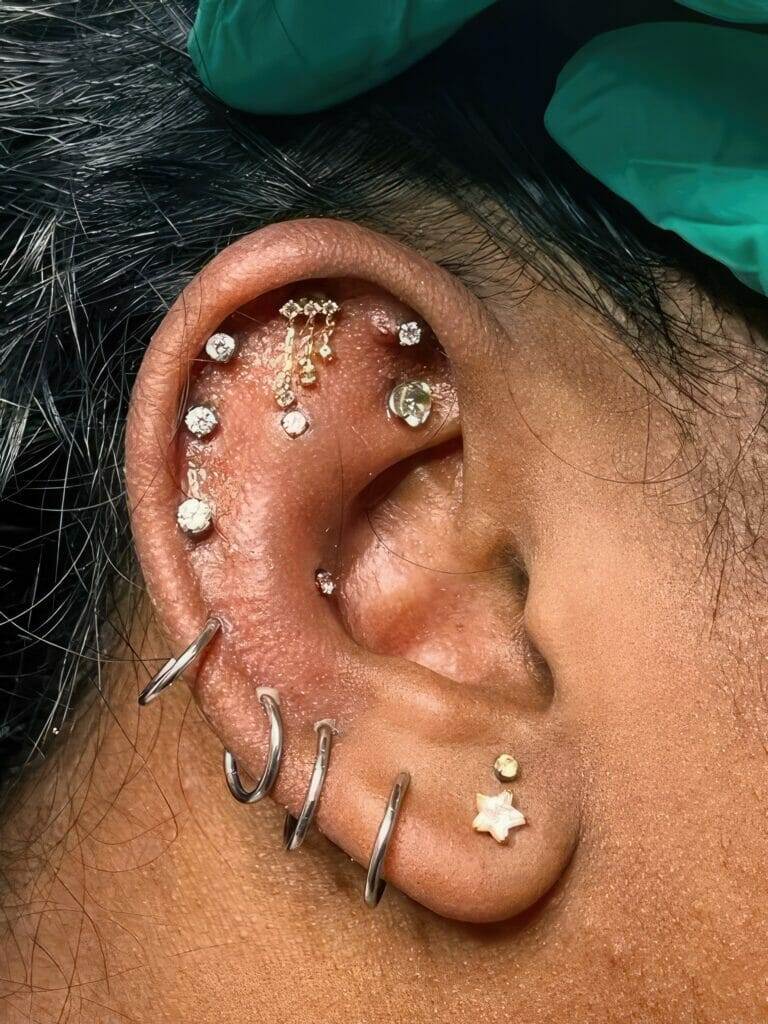
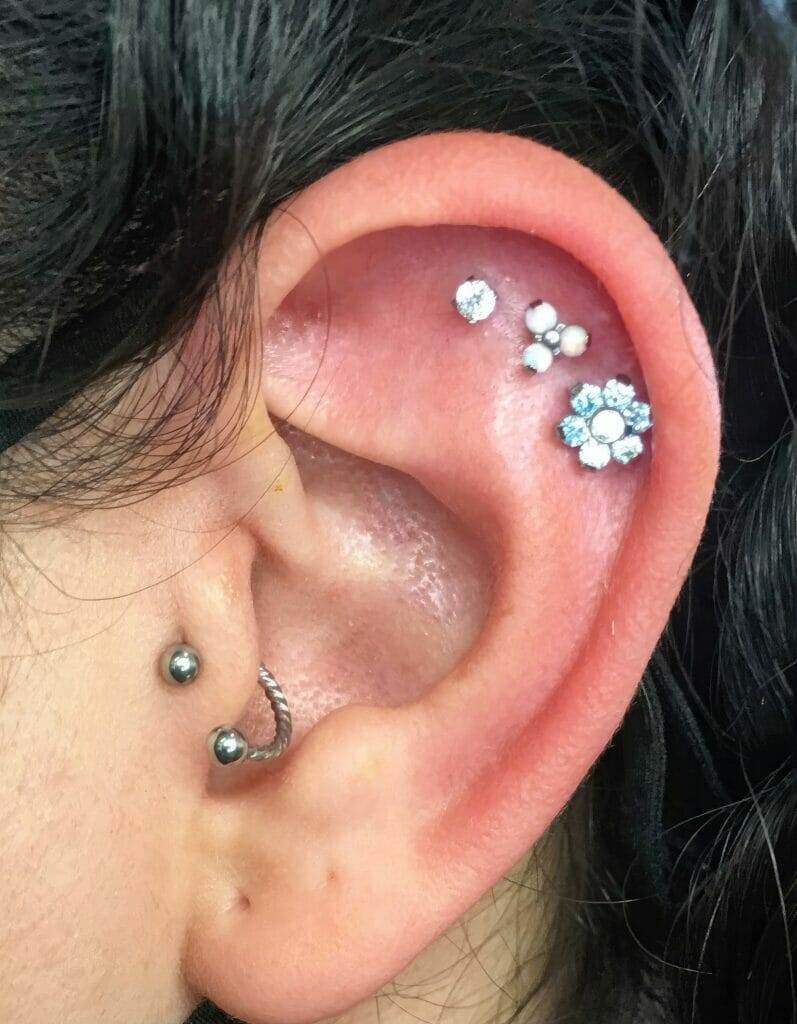
Types of Cartilage Piercings
In the evolving landscape of body modifications, the cartilage piercing has made a notable comeback, reclaiming its position as a favorite among enthusiasts. These piercings, located in the upper ear cartilage, offer an array of styles that cater to personal tastes. Here are some of the most popular types of cartilage piercings:
- Helix: A stylish option that runs along the outer rim of the ear; perfect for showcasing hoops or studs.
- Tragus: Pierced on the small flap of cartilage in front of the ear canal, offering a unique and edgy look.
- Daith: Positioned in the innermost ridge of the ear, this piercing is not only trendy but also believed by some to relieve migraines.
- Industrial: A bold look that involves two piercings connected by a single barbell, creating a striking design.
Pain Level and Healing Process
While cartilage piercings can be thrilling, it’s essential to understand the pain levels and healing process involved. Generally, pain levels can range from mild to moderate, depending on the individual’s pain threshold and the borrowed technique of the piercer. Healing Process:
- Duration: Typically takes about 3 to 6 months to fully heal.
- Cleanliness: Regular cleaning with saline solution helps prevent infections.
- Identifying Issues: Pay attention to any unusual redness, swelling, or discomfort, as these could indicate complications.
By understanding the types of cartilage piercings available and caring for them properly during the healing process, individuals can confidently embrace this comeback trend and express their unique styles.
Eyebrow Piercings Making a Statement
Eyebrow Piercing Placement Options
As the world of body art continually evolves, eyebrow piercings have undoubtedly made their mark, becoming a bold and expressive choice for piercing enthusiasts. The placement of eyebrow piercings offers a variety of options, allowing individuals to customize their look to reflect personal style. Here are some popular eyebrow piercing placements:
- Standard Eyebrow Piercing: Usually located just above the eyebrow, this placement has become a classic choice, suitable for different jewelry styles.
- Vertical Eyebrow Piercing: Positioned straight through the eyebrow itself, this unique variation can create a stunning visual impact.
- Horizontal Eyebrow Piercing: This option sits horizontally across the brow, providing an eye-catching and unconventional appearance.
Each placement creates its own distinct look, so exploring these options can add a significant touch to one’s overall style.
Eyebrow Piercing Jewelry Styles
When it comes to jewelry styles for eyebrow piercings, the choices abound, allowing for further personalization:
- Curved Barbells: Versatile and comfortable, these are often favored for their trendy flair.
- Captive Bead Rings: Offering a distinctive round shape, these rings can add a touch of shine and elegance.
- Decorative Studs: These can feature unique designs, from gemstones to custom engravings, making the piercing even more personal.
Choosing the right jewelry not only enhances the piercing but also provides an opportunity for self-expression and creativity. By selecting from an array of placements and jewelry styles, individuals can confidently showcase their personality through eyebrow piercings, making a statement that resonates with their unique aesthetic.
Lip Piercings: From Subtle to Bold
Lip Piercing Placement Guide
Following the exploration of eyebrow piercings, lip piercings have emerged as a versatile and expressive option for body art lovers, ranging from subtle accents to bold statements. The placement of lip piercings can significantly influence the overall look and vibe they convey. Here are some common placements to consider:
- Labret: This piercing is located below the lower lip, centered or slightly to the side, creating a focal point for the face.
- Monroe: Positioned on the upper lip, off-center to mimic the beauty mark of the iconic Marilyn Monroe, this piercing carries a vintage charm.
- Snake Bites: A trendy choice that involves two piercings on the lower lip, one on each side, creating a captivating dual effect.
- Vertical Labret: This piercing runs vertically through the lip, showcasing both a top and bottom bead, making it a daring choice.
Each placement offers a unique aesthetic, allowing for personalized expressions.
Lip Piercing Jewelry Trends
When it comes to jewelry styles for lip piercings, recent trends have expanded the options available:
- Studs: Classic and timeless, these can feature various stones or designs, offering something for everyone.
- Hoops: Adding a playful twist, hoops can create a more dynamic look, perfect for those seeking a bolder statement.
- Captive Bead Rings: These rings provide an edgier vibe and can be mixed and matched with colorful beads for added flair.
By thoughtfully choosing placements and jewelry styles, individuals can effectively express their personalities through lip piercings, moving seamlessly between subtle elegance and bold expression.
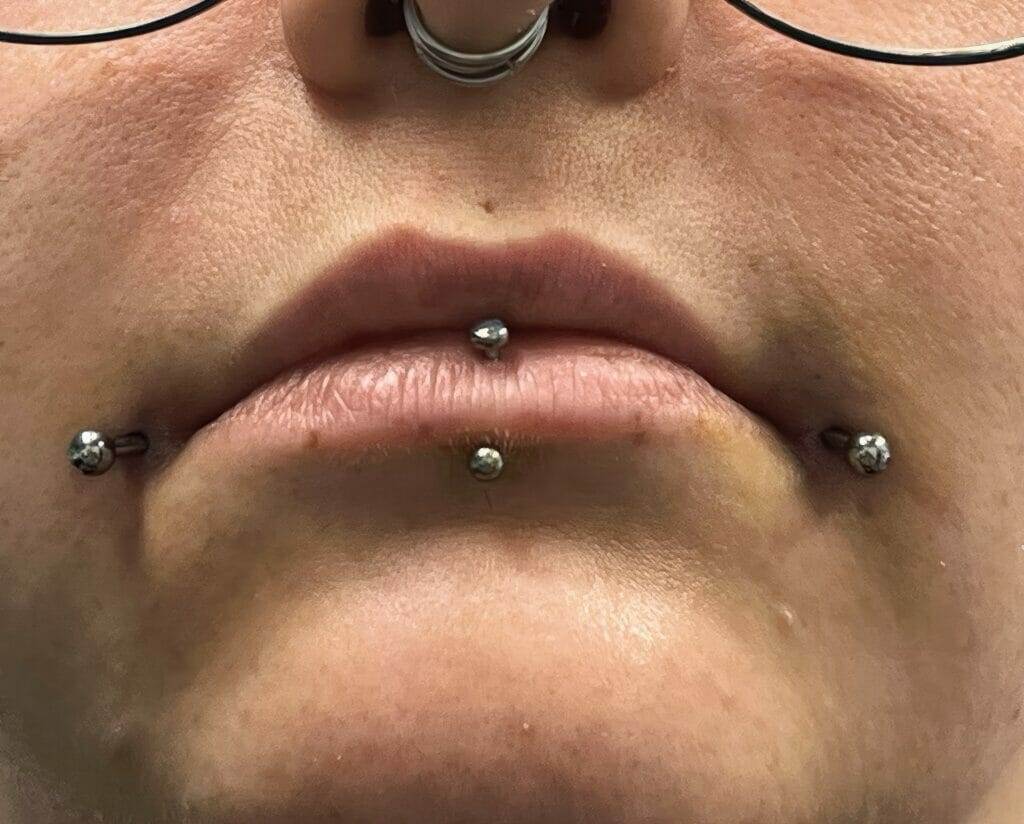
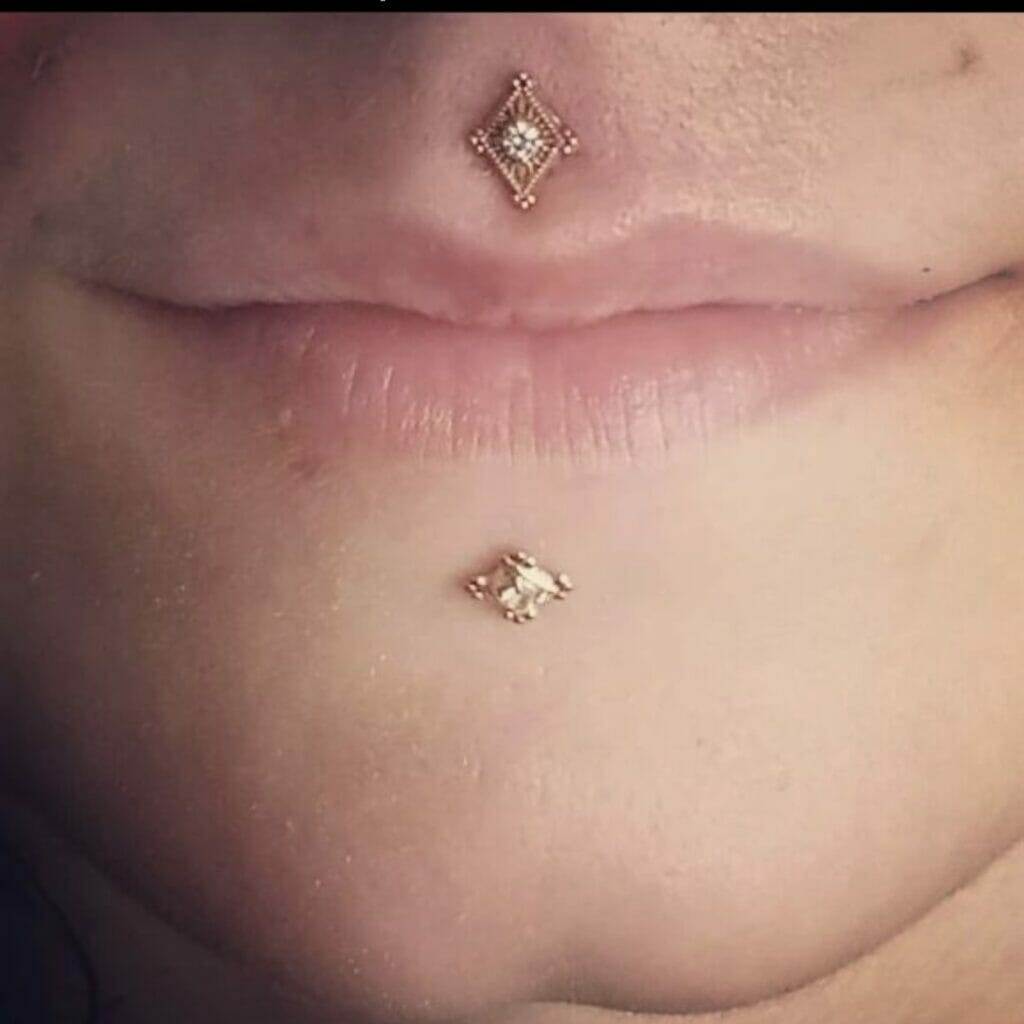
Conch Piercings Rising in Popularity
Conch Piercing Variations
Building on the allure of lip piercings, conch piercings are experiencing a noteworthy rise in popularity among body modification enthusiasts. Nestled in the inner shell of the ear, these piercings offer a distinct aesthetic that can be tailored to individual preferences. There are two primary variations to consider:
- Inner Conch: Located in the central area of the conch, this piercing allows for bold jewelry choices and is perfect for showcasing decorative pieces such as captive bead rings or studs.
- Outer Conch: Positioned along the outer edge of the conch, this option often results in a more subtle look, favoring minimalist rings or smaller studs.
Both variations provide unique opportunities for creativity and self-expression, making them increasingly popular choices for those seeking to adorn their ears.
Pros and Cons of Conch Piercings
Like any body modification, conch piercings come with their own set of benefits and drawbacks to consider: Pros:
- Versatility: Conch piercings can accommodate a diverse range of jewelry styles, from elegant to edgy, impressing onlookers.
- Unique Look: The placement adds a distinctive flair to ear jewelry, setting it apart from more common piercings.
Cons:
- Pain Level: Some individuals may find the process moderately painful, as the cartilage can be more sensitive than softer areas.
- Longer Healing Time: Conch piercings typically take longer to heal—around 6 to 12 months—meaning consistent aftercare is essential.
By weighing the pros and cons, individuals can make informed decisions about whether conch piercings are the right choice for their personal style journey. Embracing this trend not only enhances one’s aesthetic but also allows for a deeper connection with the art of body modification.
Septum Piercings: An Evergreen Trend
Septum Piercing Origins
Continuing the exploration of unique body art, septum piercings have firmly established themselves as an evergreen trend in the world of fashion and self-expression. Historically, this piercing traces back to various Indigenous cultures, where it was often seen as a symbol of status and strength. Ancient tribes in Africa and America utilized septum piercings not only for aesthetic purposes but also as a rite of passage, representing maturity and courage. Today, septum piercings have transcended their cultural roots and entered mainstream fashion, appealing to people from all walks of life. The versatility of this piercing allows individuals to express their unique identities while embracing a connection to the rich history behind it.
Celebrities Sporting Septum Piercings
The resurgence of septum piercings in contemporary times has been undoubtedly amplified by celebrities who boldly flaunt this style. Numerous public figures have embraced septum piercings, each showcasing their distinct flair:
- Rihanna: Known for her ever-evolving style, Rihanna has sported septum jewelry that ranges from delicate to bold.
- Katy Perry: Often showcasing colorful rings and unique styles, Katy adds a playful twist to her septum piercing.
- Cara Delevingne: With her fearless approach to fashion, Cara embraces the edgy side of septum piercings, making it a signature part of her look.
These trendy icons not only inspire fans but also contribute to the ongoing popularity of septum piercings as a form of self-expression and individuality. Whether opting for a subtle hoop or a striking piece, this piercing offers a timeless way to make a statement.
Tongue Piercings Making Waves
Unique Tongue Piercing Placements
As we transition from septum piercings to another exciting form of body modification, tongue piercings are undoubtedly making waves in the world of self-expression. These piercings not only offer a bold aesthetic statement but also provide unique placement options that can cater to a person’s individual style. Here are some unique placements to consider:
- Midline Tongue Piercing: The most common type, this piercing is placed directly in the center of the tongue, allowing for a wide variety of jewelry options.
- Side Tongue Piercing: Located on either side of the tongue, this bold choice is often favored by those seeking a more distinctive look.
- Snake Eyes: Involving two piercings placed horizontally toward the tip of the tongue, this edgy look can give the illusion of a snake’s tongue.
- Frenulum Piercing: This placement goes through the thin tissue connecting the underside of the tongue to the floor of the mouth, offering a subtler piercing option.
Tongue Piercing Aftercare Tips
After getting a tongue piercing, proper aftercare is crucial for a healthy healing process. Here are some essential tips to keep in mind:
- Rinse with Salt Water: Use a saline solution to rinse the mouth after meals and before bed to reduce bacteria.
- Avoid Certain Foods: Steer clear of spicy or acidic foods during the healing period to minimize irritation and discomfort.
- Stay Hydrated: Drinking water helps flush bacteria and keeps the mouth clean while aiding the healing process.
- Monitor for Issues: Keep an eye out for excessive swelling or signs of infection, like persistent pain or pus, and consult a professional if necessary.
Embracing a tongue piercing can be a transformative experience, allowing individuals to showcase their uniqueness while following proper aftercare practices to ensure a smooth recovery. With creativity in both placement and care, tongue piercings continue to captivate those looking to make an impactful statement.

